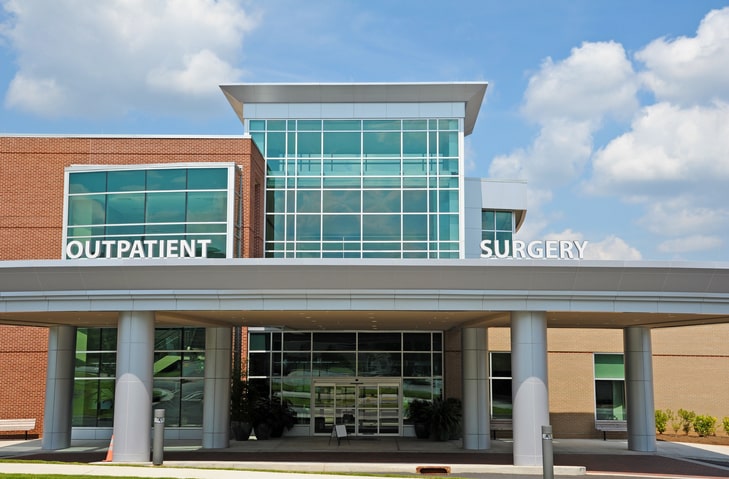
Outpatient, or ambulatory, surgeries don’t require the patient to stay overnight in the hospital. Most outpatient procedures occur at an ambulatory surgery center, and the patient can be released within a few hours of finishing the surgery.
Outpatient surgery offers many advantages. It often costs less and allows the patient to recover in their own home, where they may feel more relaxed and encounter less noise.
What Surgeries Can Be Outpatient?
Your doctor should discuss whether you can get an outpatient surgery — it may depend on your condition and the available space. Many types of outpatient surgeries can be performed, including:
- Repairing a rotator cuff
- Golfer’s or tennis elbow surgery
- A hip arthroplasty
You can also undergo several types of outpatient knee surgery, including arthroscopic knee surgery and partial knee replacement.
When Can You Go Home After Outpatient Surgery?
Every surgery is different. When you go home depends on how you recover from the anesthesia and feel after the surgery. Your physician may ask you to demonstrate you’re ready to leave by:
- Standing and walking.
- Urinating or having a bowel movement.
- Showing normal blood pressure and breathing.
Your doctor won’t release you until they are convinced you will be OK at home. Signs that you may need to wait a little longer include symptoms of nausea and having trouble thinking clearly. Most post-surgery symptoms clear up within one to four hours, and you will be allowed to leave. However, you need to have someone drive you home. Your doctor will also likely advise that you have someone stay with you for at least 24 hours after surgery.
What to Expect After an Outpatient Surgery
After an outpatient surgery such as a knee replacement, recovery times vary depending on your condition when you entered the procedure. For example, if you performed knee exercises regularly leading up to your outpatient knee replacement, you may recover more quickly. Your knee will have existing strength that may make it easier for you to regain mobility.
For the first 24 hours after surgery, pain control is your primary focus. Your physician will prescribe medications that provide pain relief while decreasing other side effects. Once your pain is controlled, your doctor will want to see you demonstrate mobility. They may encourage you to begin walking by using a walker or working with a physical therapist.
Your goal should be to bear weight on the knee while leaning on something. The sooner you begin using your new knee, the sooner you can recover.
Contact OrthoBethesda for More Information
OrthoBethesda recognizes the importance of offering common outpatient surgeries to treat musculoskeletal issues. You can recover on your own timeline and receive care in the comfort of your home. Our minimally invasive procedures are designed to ease the transition from the outpatient facility to your home.
Get in touch with us today to discuss your case or make an appointment online.
Related Content
- Arthritis vs. Arthrosis
- Common Types of Arthritis Explained
- Types of Bursitis
- Consequences of Delaying Medical and Surgical Care
- Winter Injury Prevention Guide
- Inpatient Surgery vs. Outpatient Surgery
- Why Your Joints Are Cracking
- What Does an Orthopedic Doctor Do?
- How to Prevent Osteoporosis
- What to Wear and What Not to Wear During Surgery
